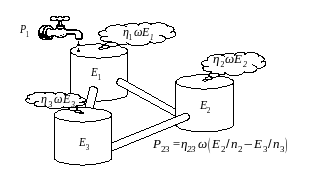|
 |
Position
Graduated in both Engineering degree and Master of Mathematics, Alain Le Bot started his career in Institut National Polytechnique Felix Houphouët Boigny (INPHB previously named INSET) in Yamoussoukro, Ivory Coast as teacher in mathematics during two years. Being back in France, he joigned EDF compagny (Electricity of France) as engineer in the department Acoustique et mécanique vibratoire for four years. Doctor in acoustics in 1994 and Habilité à diriger des recherches in 2002, Alain Le Bot is currently Directeur de recherche CNRS and manages the team Nano-tribology, Friction and Vibroacoustics of the Laboratory of tribology and dynamics of systems (LTDS UMR CNRS 5513, Ecole centrale de Lyon, Ecole nationale d'ingénieurs de Saint-Etienne).
Research activity
A. Le Bot's main areas of research concern acoustics, vibration and tribology. Jointly with several co-workers and PHD-students, his activity is conducted in the team Nanotribology, friction and vibroacoustics. His topics of research are the followings:
i)Statistical energy analysis (SEA). Statistical Energy Analysis is a theory of energy exchanges in vibroacoustical systems. Proposed in the sixties by Lyon, Sharton, Maidanik, Smith, Ungar... SEA is the analogous of thermodynamics for audio frequencies. Introducing the concept of vibrational temperature, SEA is based on the assumption that the exchanged powed between adjacent vibrational systems is proportional to the difference of vibrational temperatures. Although SEA is commonly applied in engineering, it is still in development. Our work aims to clarify the foundations of SEA and especially the assumption of "diffuse field" which can also be enounciated as the theorem of "equipartition of energy". The study of non-diffuse field in SEA is related to the non-equilibrium theory of thermodynamics.

Fig. 1. Statistical Energy Analysis in vibroacoustics. A complex structure is divided in several sub-systems. These sub-systems can store vibrational energy (tank volume), can receive energy from noise sources (tap), can dissipate energy (evaporation) and finally, can exchange energy with neighbour sub-systems (pipe).
ii)Radiative transfert equation in vibroacoustics. When the energy field is non-diffuse in vibroacoustics, SEA no longer applies. The question then arises of which theory can predict the repartition of energy within sub-systems. We have proposed a theory based on the radiative transfert equation applied to acoustical and structural rays. In this theory, energy balance equations are written at any point within sub-systems and at the interface of sub-systems instead the global energy balance equations of SEA. This theory has been implemented in the software CeReS ans has been successfuly applied to many examples such as assembled plates, coupled rooms, radiating plates, structural response and diffraction.

Fig. 2. Radiative transfert in vibroacoustics. Repartition of sound around a car engine. The sound field is largely non diffuse (Prediction of CeReS software, from thesis of Emeline Sadoulet-Reboul).
iii)Dynamics of multi-contact interfaces. When two solids slide on each other, it is well-known that a friction force opposes to the movement. After several centuries of stagnation, tribology made progress with the discovery of Bowden and Tabor that the relatively rare contact of antagonist asperities can explain Amontons-Coulomb's laws. Although this theory is still in discussion, it is commonly admitted that the multi-contact interface is the key of the understanding of friction. Our work aims to study the dynamics of multi-contact interfaces. Several phenomena are under investigation. We study friction noise and more particularly roughness noise that is the noise which originates from the shocks between antagonist asperities. Wear by vibro-impacts is the second subject. Is is encountered, for instance, in systems where a shaft vibrates into its bearing with a relatively low level but a long duration.


Fig. 3. The actual contact between two solids is achieved by a large number of small spots. Left, asperities in contact between two rough surfaces. Right, view of contact between glass and elastomer, the contact spots are colored in red (full scale ~ 100 micrometers, from thesis of Fabrice Deleau).
iv)Uniski for disabled men. Skiing for disabled men is a relatively recent practice. The beginning was in the eighties and this practice has now gained in popularity. The most famous official competition is the Paralympic games. In this framework, we have designed and manufactured some uniskis intended for the highest level of competition. In the Paralympic games of Lillehammer 1994, Norway, Ludovic Rey-Robert won the gold medal in downhill and slalom events whereas Alain Marguerretaz won the bronze medal in Super-G event with our uniskis. Nowadays, Denis Barbet, gold medal in Paralympic games of Turin 2006, has the benefit of our technical help to prepare his races.

Fig. 4. Uniski for disabled men. Ludovic Rey-Robert and Alain Marguerretaz during the Paralympic games Lillehammer 1994.



 Tel : +33 (0)4-72-18-62-75
Tel : +33 (0)4-72-18-62-75
 E-mail :
E-mail :